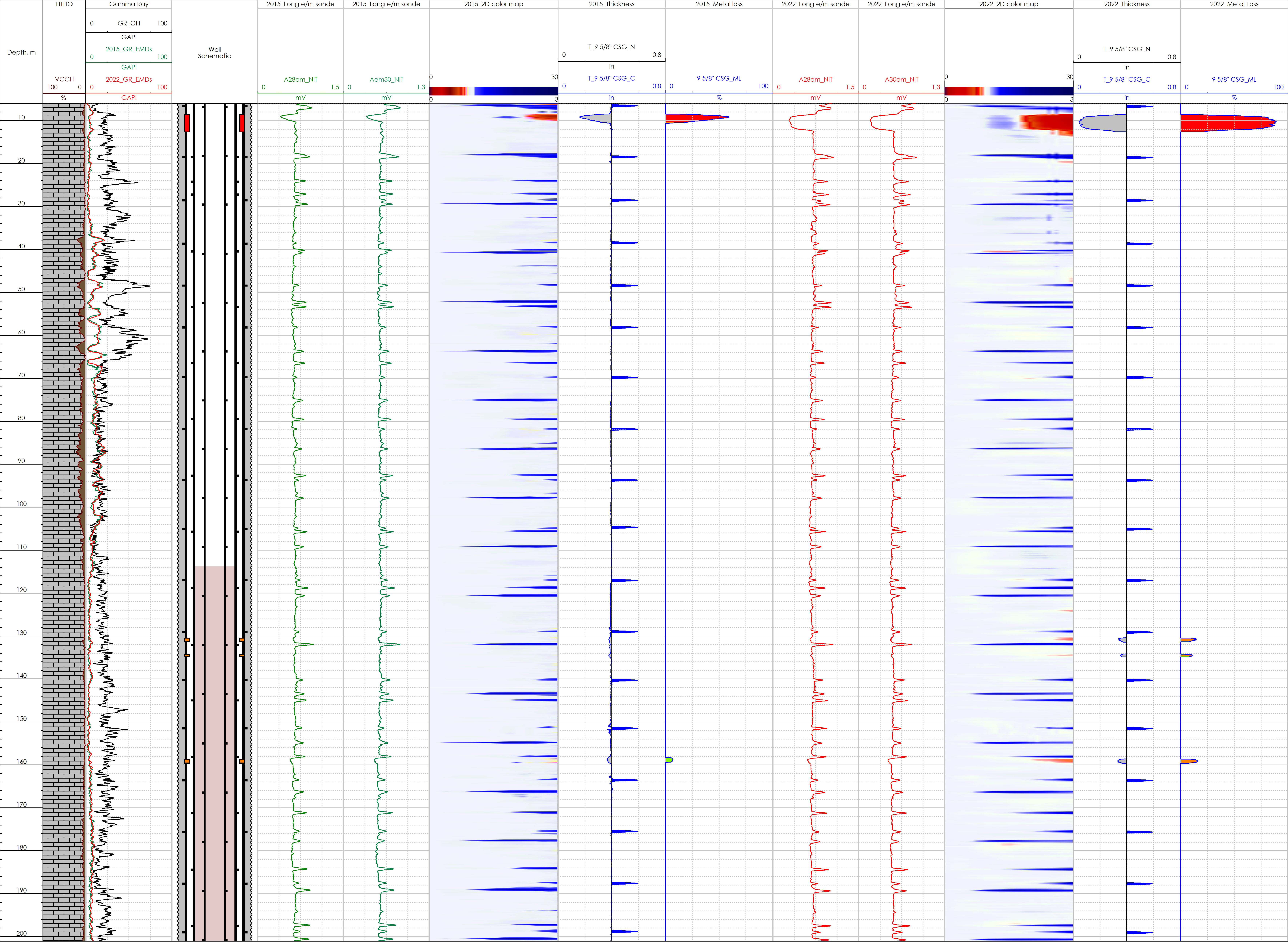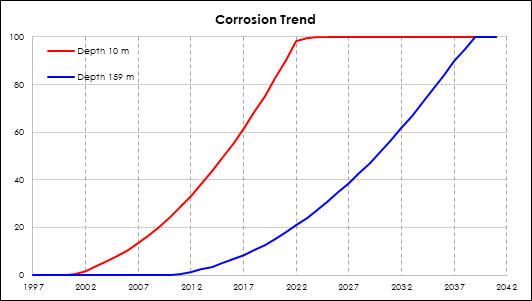Integrity Challenge
It is important to have a good cement bond in the annulus across corrosive intervals. External coating on the pipe will lessen the risk of corrosion. However, if the cement quality is poor and early corrosion is identified then it is essential to increase the frequency of corrosion logging to determine the integrity of the pipe and predict the rate of corrosion. This will allow remedial action to be planned in a timely manner to avoid catastrophic failure. This will also provide data to predict corrosion rates for similar wells.
Corrosion Logging Result
One example when corrosion monitoring was done in a well is as shown below:
The well is a horizontal ESP oil producer drilled in 1997. The well was completed with a 9 5/8” uncoated surface casing. The original open hole section was plugged back to the casing shoe and a horizontal sidetrack (hole 2) was drilled to a new geological target. Hole 2 was completed with a 7” intermediate liner and 4.5” wire wrapped screens (WWS). A 3.5” electrical submersible pump (ESP) completion was run.
In 2009 during a workover the 9 5/8” casing failed a pressure test. A 7” scab liner was run from surface to the top of the 7” intermediate liner. The well was completed as an ESP producer and put on production.
In 2015 EMDs logging was conducted and the log data indicated the presence of 2 intervals of corrosion across the upper section of the well: the first is very shallow with maximum metal loss of 57%, the second is a localized zone at 159 mf with metal loss of 9%.
In 2022 corrosion logging was repeated. The log data indicated that the upper corroded interval in the 9 5/8” casing had increased and metal loss had reached 90%. Metal loss at the depth of 159 m had increased to 19%. In addition, 2 extra localized intervals were detected at depths of 131 m with metal loss of 13% and 135 m with metal loss of 10%.
Based on the calculated metal loss from the 2 logging surveys, the corrosion trend for the two intervals were plotted as shown below. It can be seen that the corrosion rate was more aggressive in the upper interval. Taking into consideration the casing pressure test result in 2009, it appeared that the life of the casing from drilling to failure was predicted to be approximately 11-12 years. Metal loss is predicted to reach 100% in 25 years. However, the well will require further corrosion monitoring as there is a high possibility of migration of corrosion to the 7” scab liner.
Attention also should be given to the corroded intervals located at the interval 135-159 m, currently the annual corrosion rate is not particularly high. However, assuming that these intervals will have the same corrosion trend as the upper interval, the casing could have through wall defects across this area in the next few years which could also lead to corrosion migration to the 7” scab liner.
Conclusion and Recommendation
The EMDs tool can accurately pinpoint areas of corrosion and metal loss. Time lapse corrosion monitoring is essential to establish corrosion rate trends to predict estimated time of failure for the well which was logged and similar well designs. Providing this data to the client allows planning for an intervention prior to a catastrophic failure.
All case studies
Looking for more information?
Get in touch with us and our representative will get back to you
Contact Us




